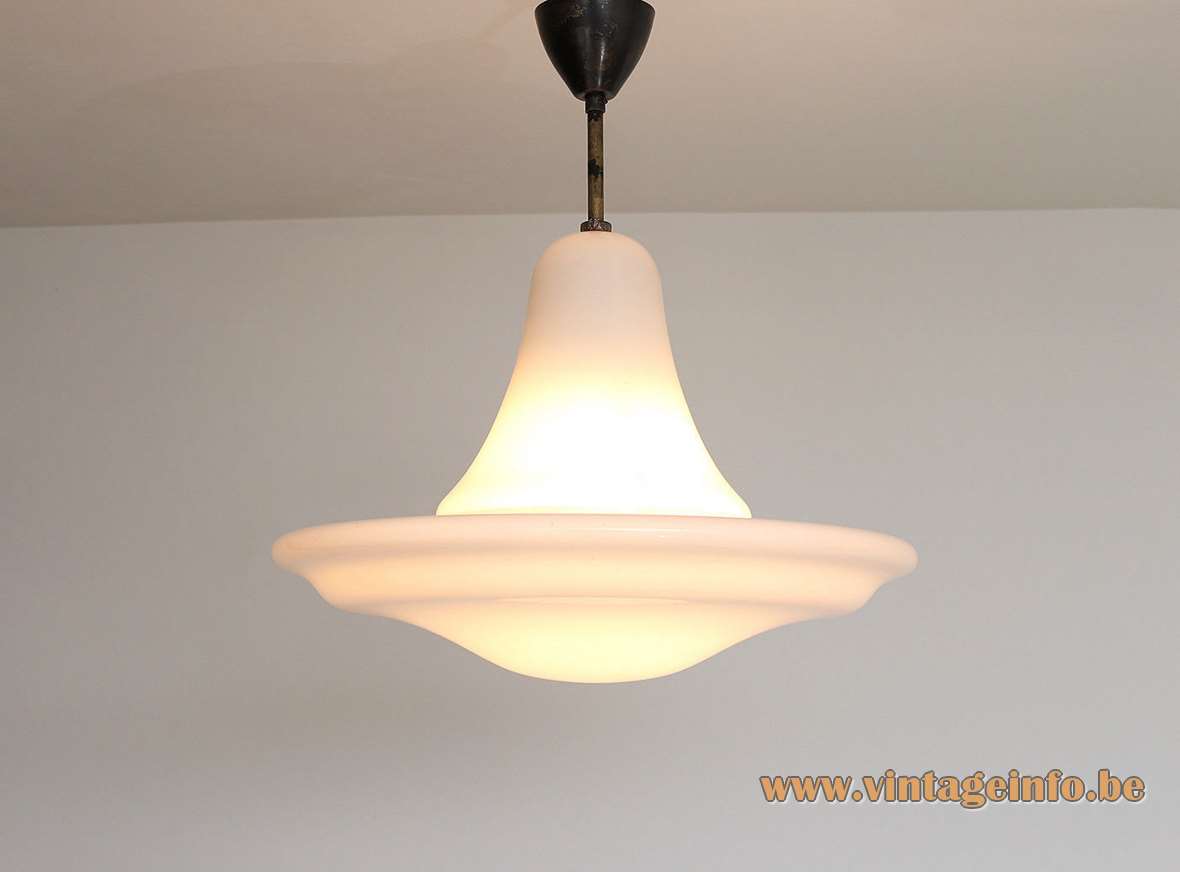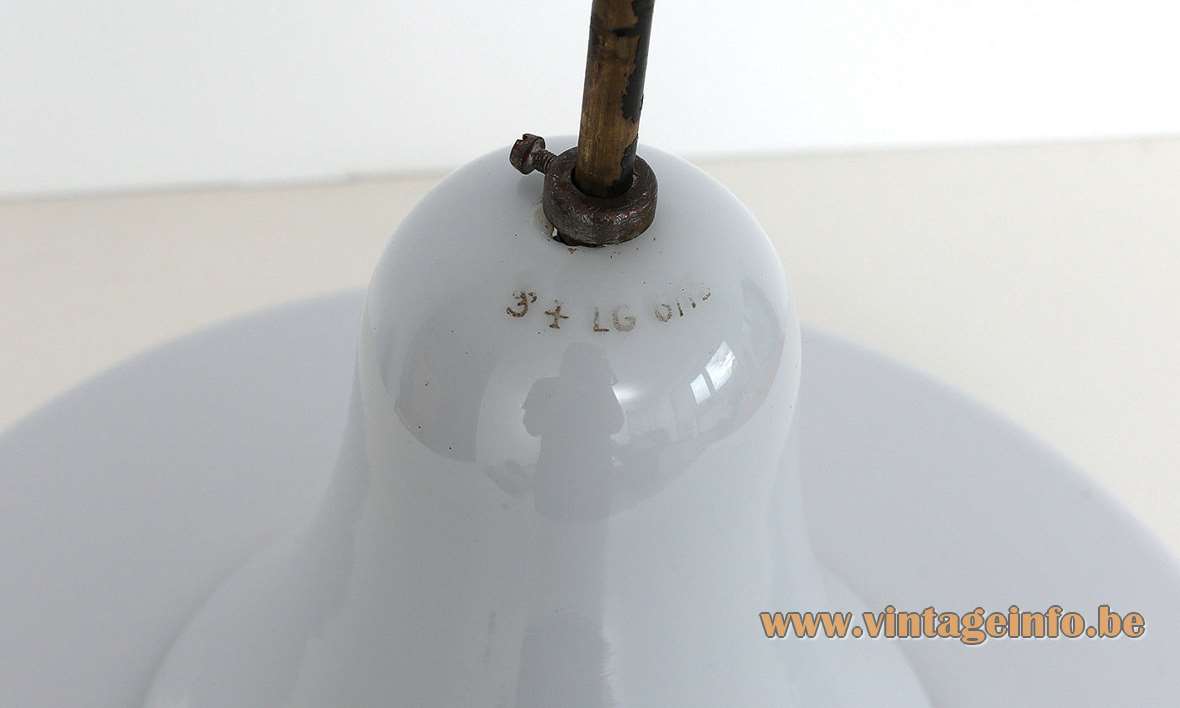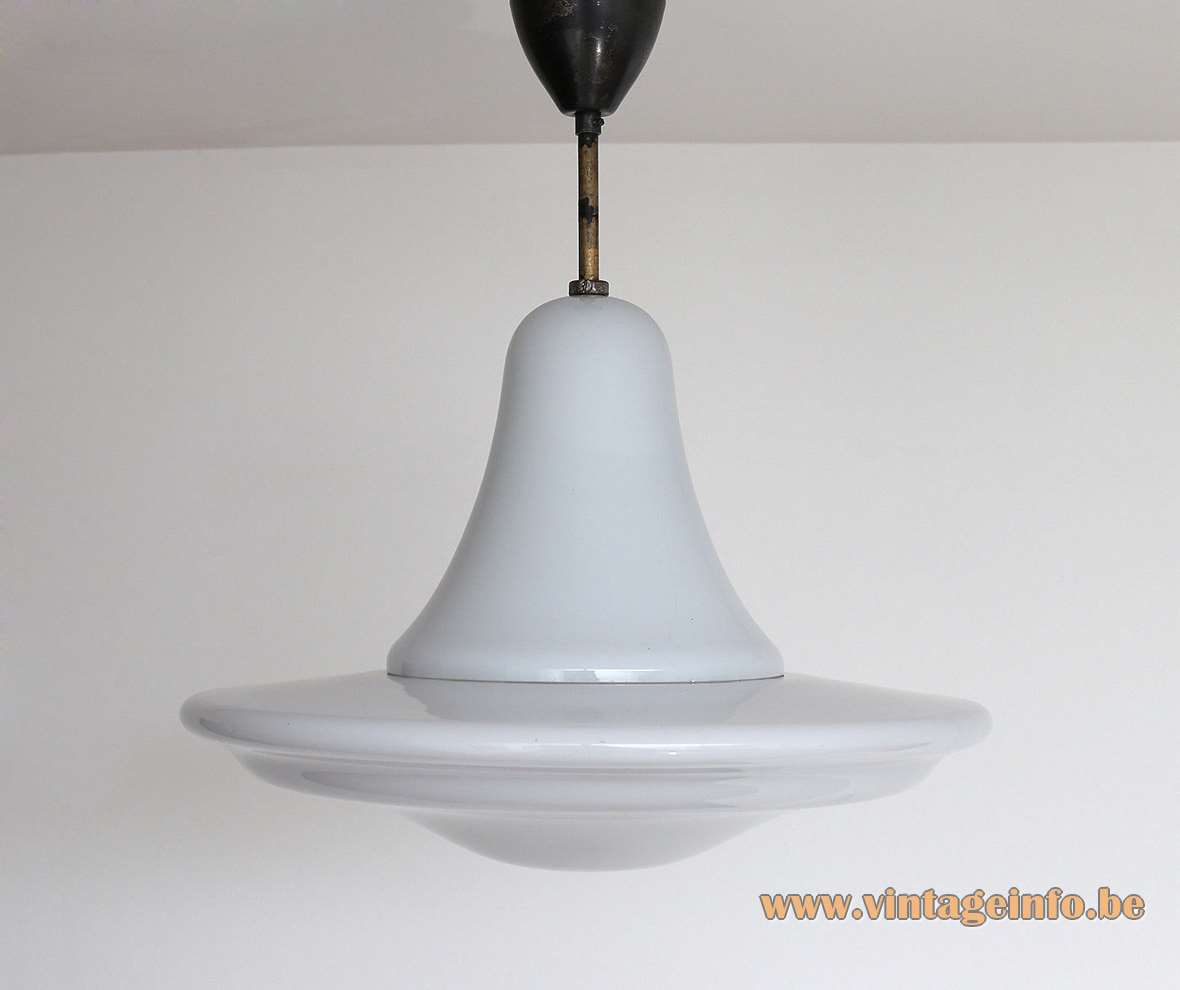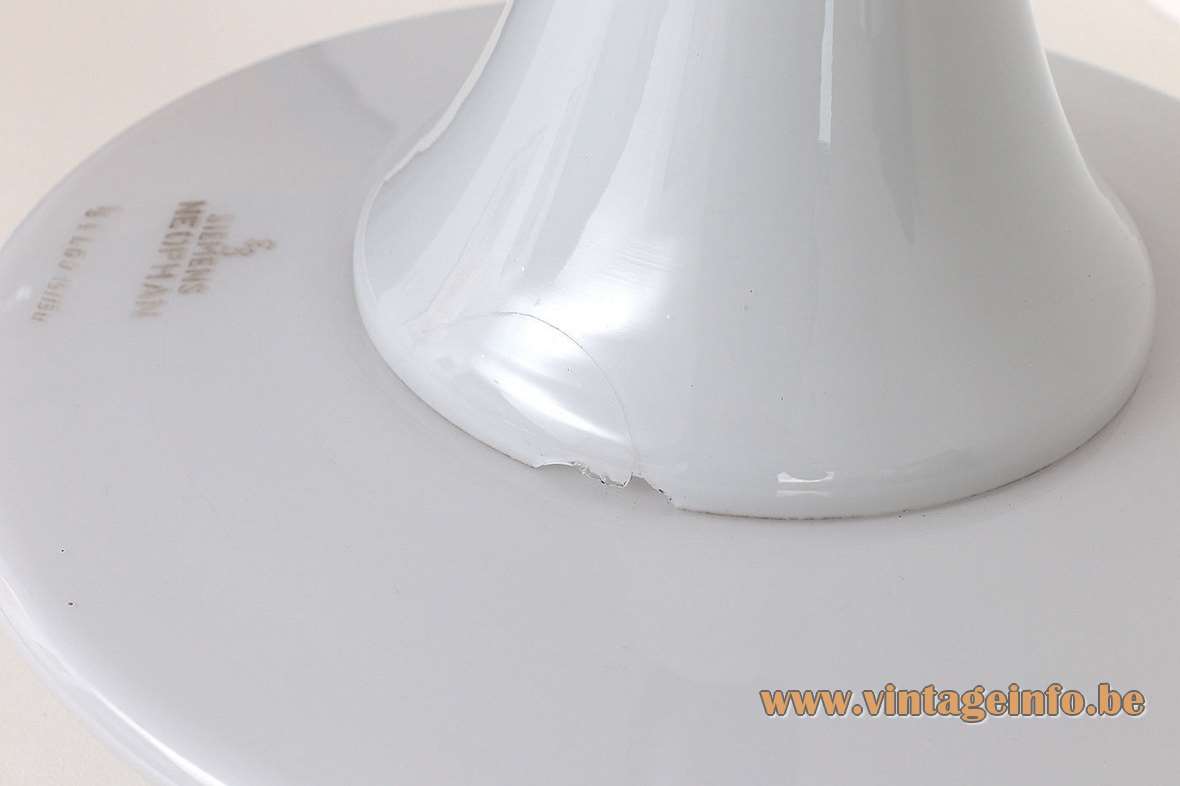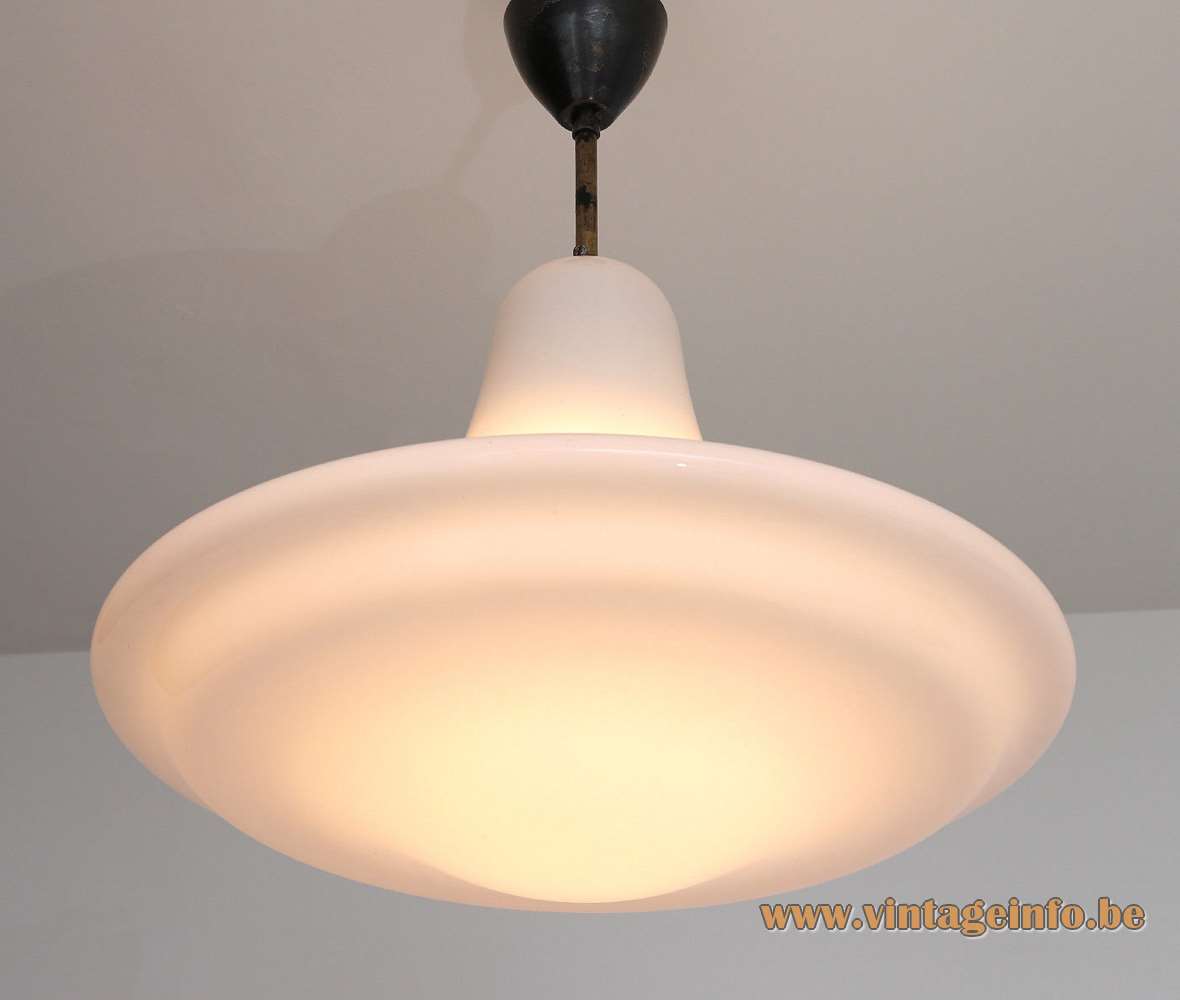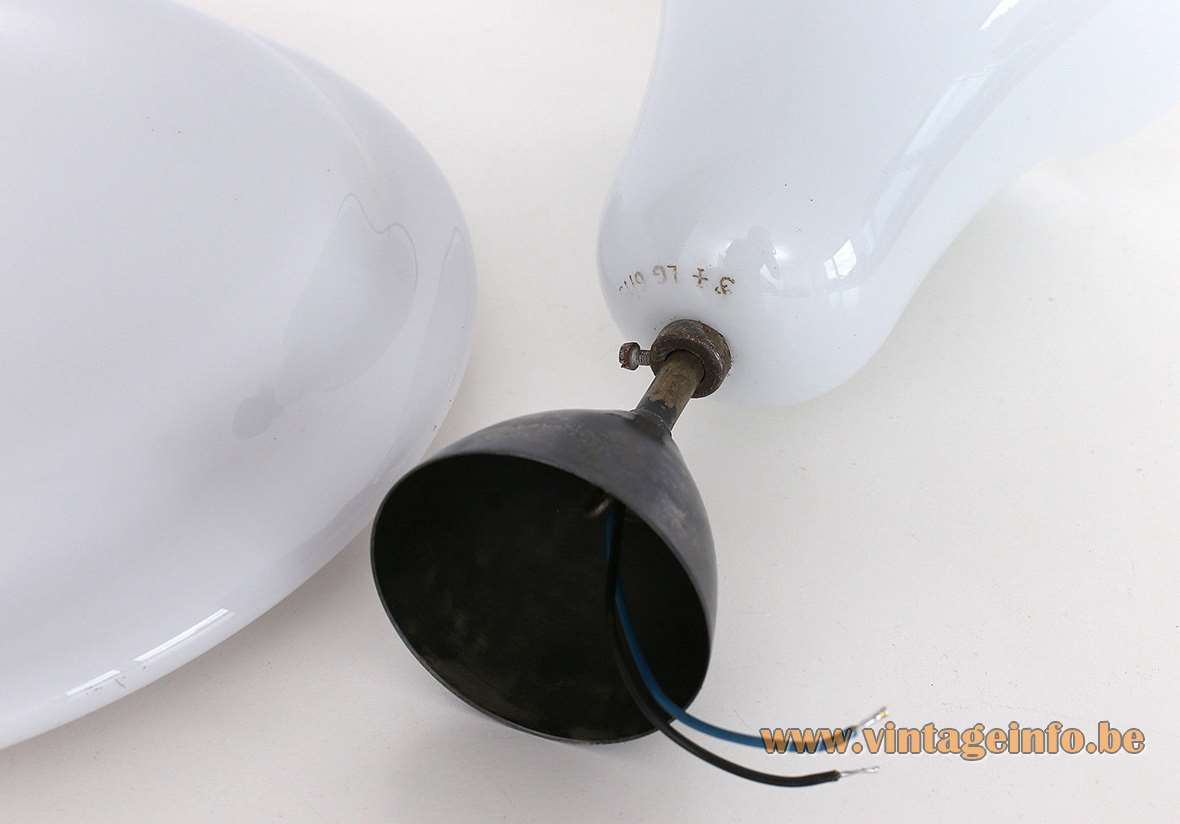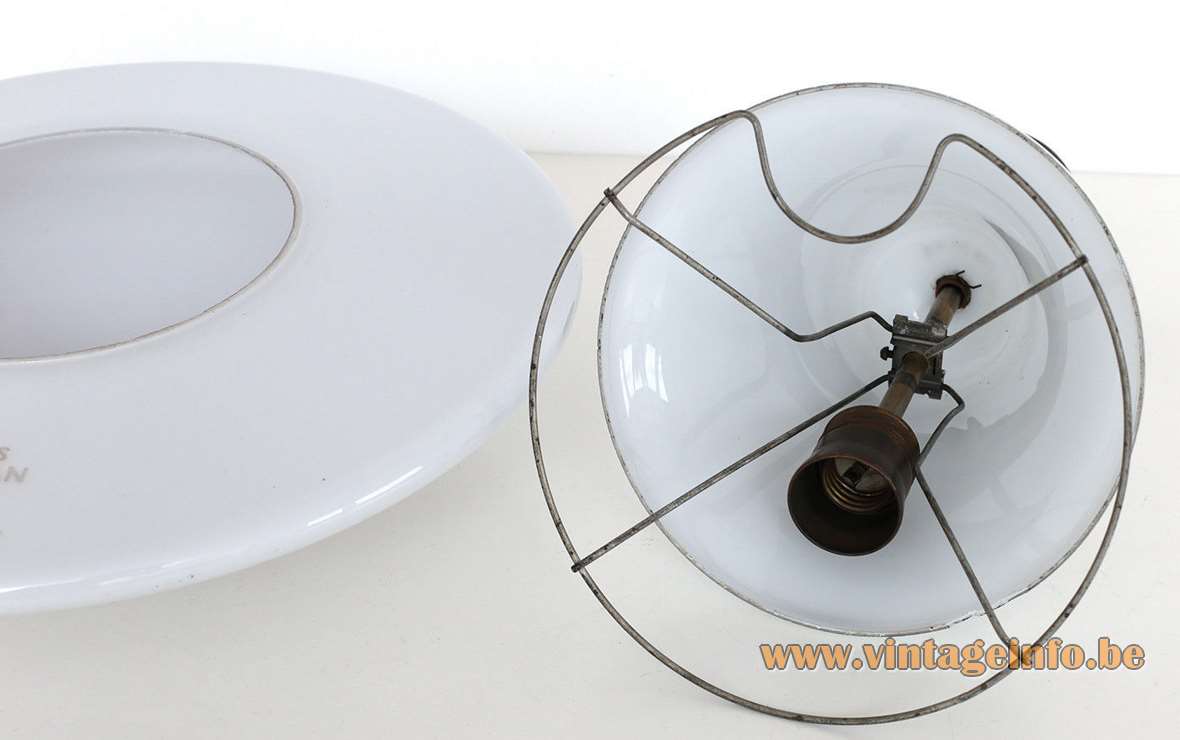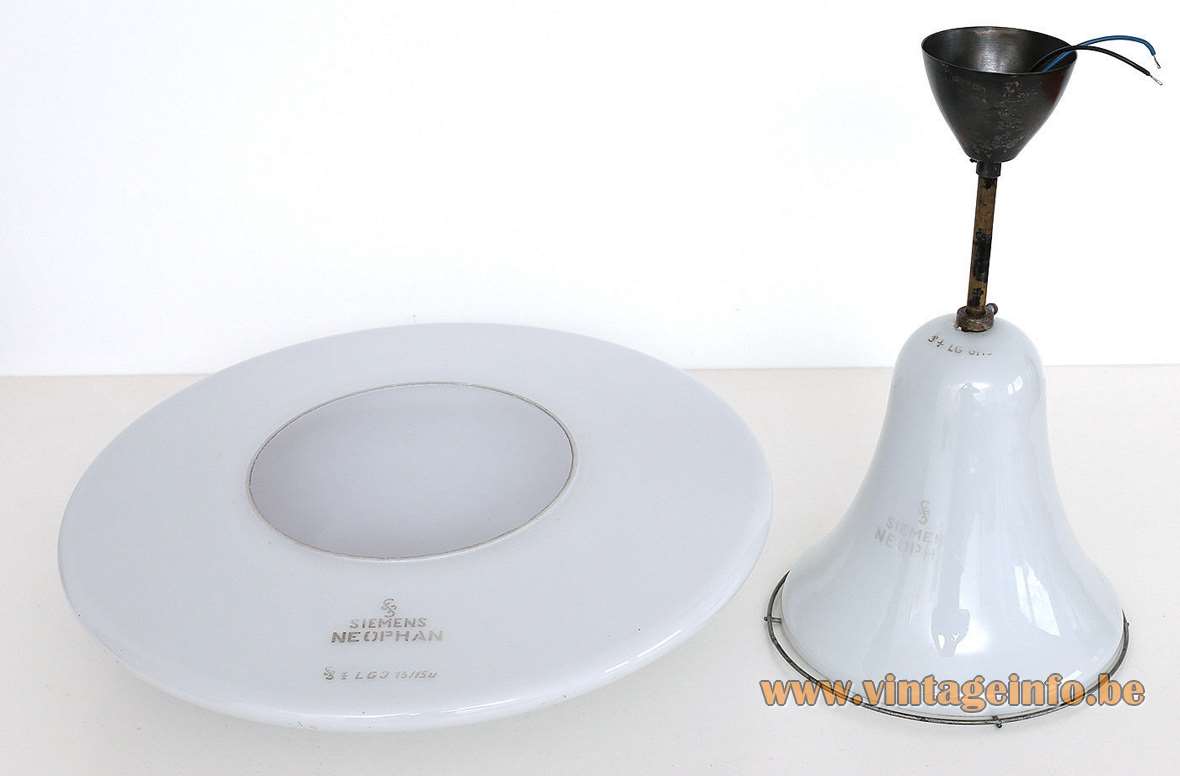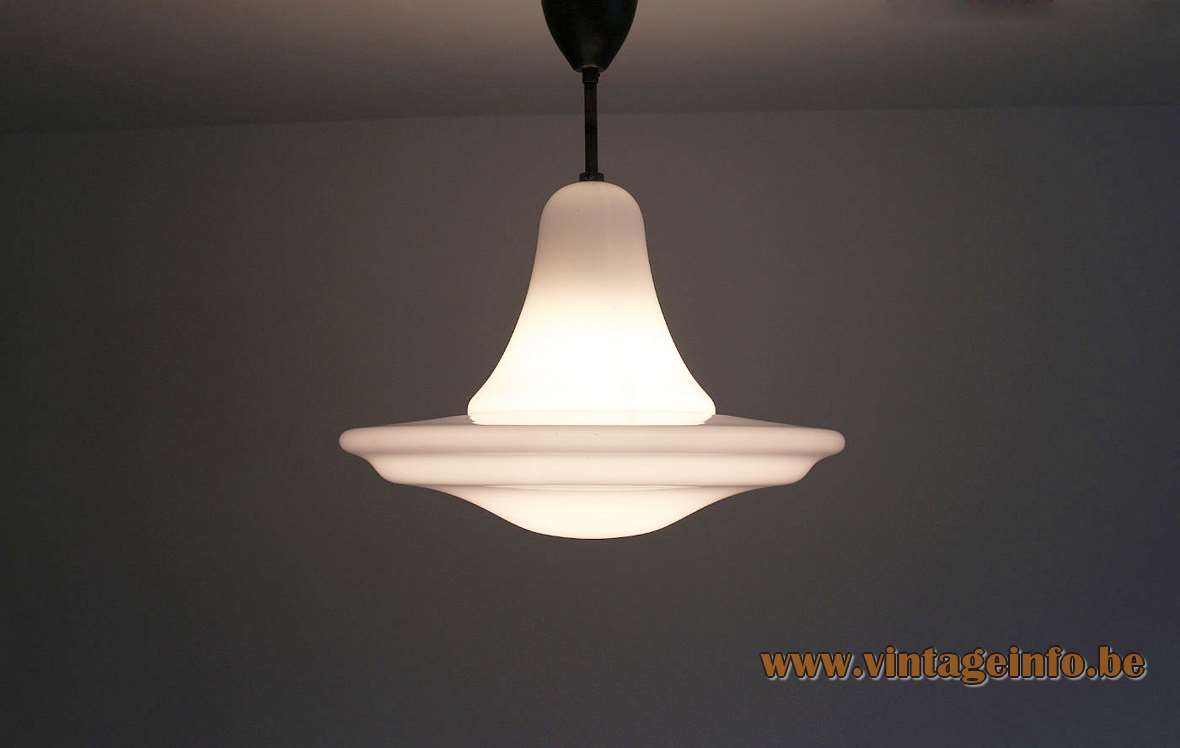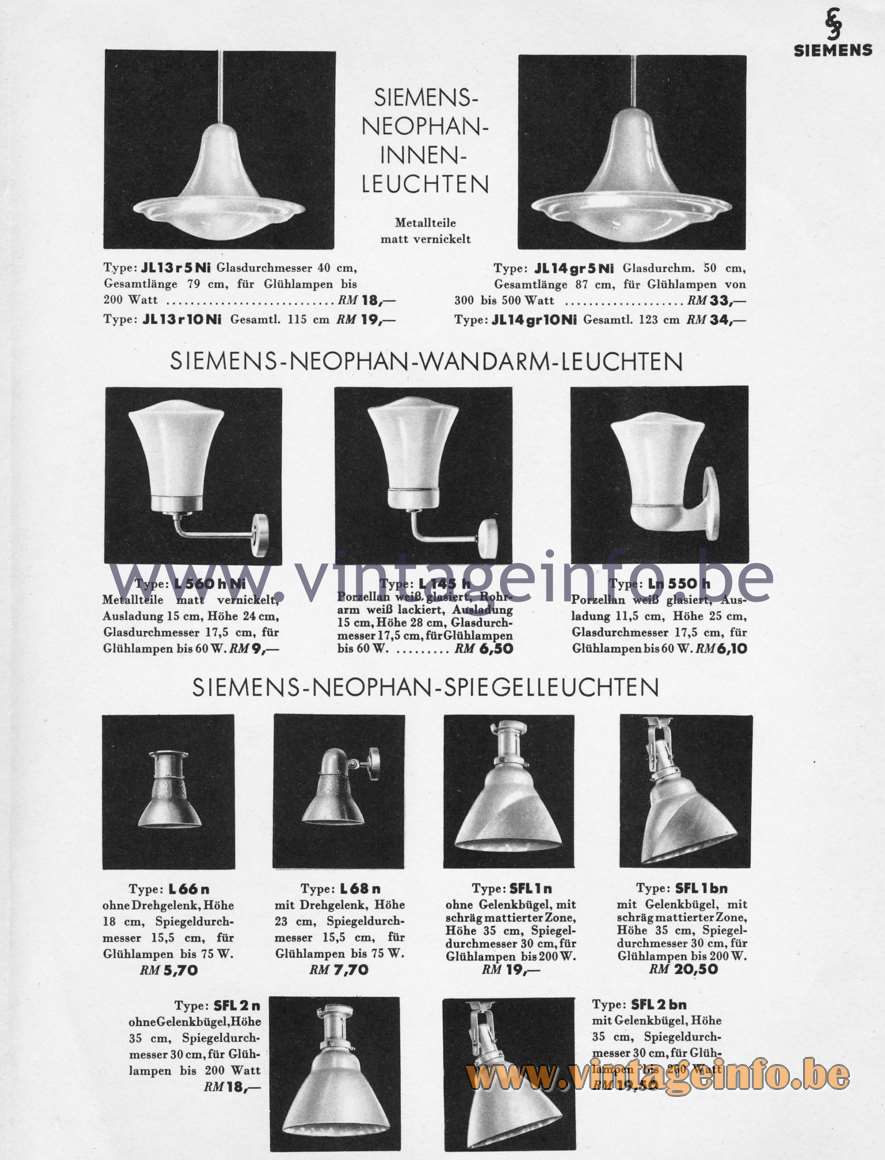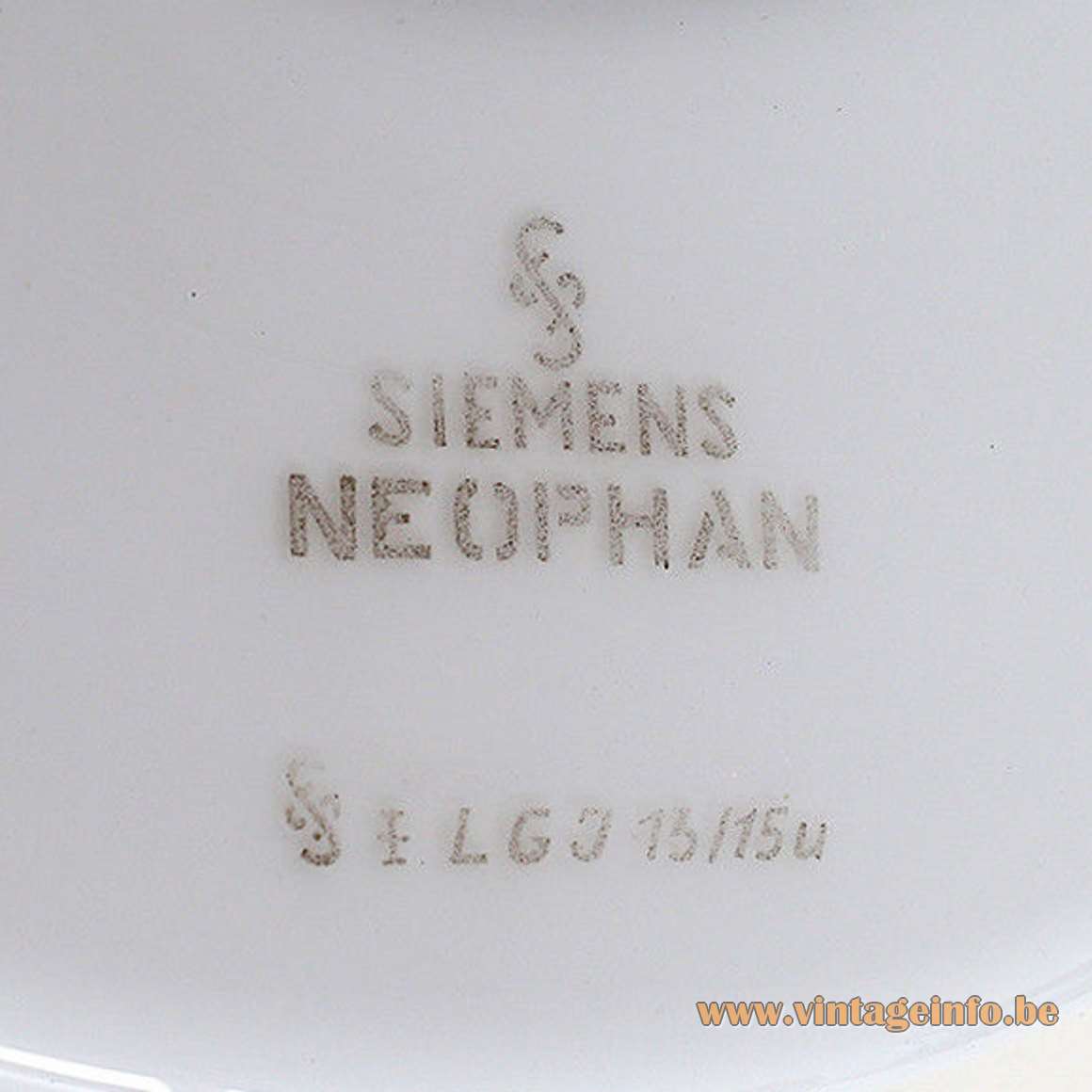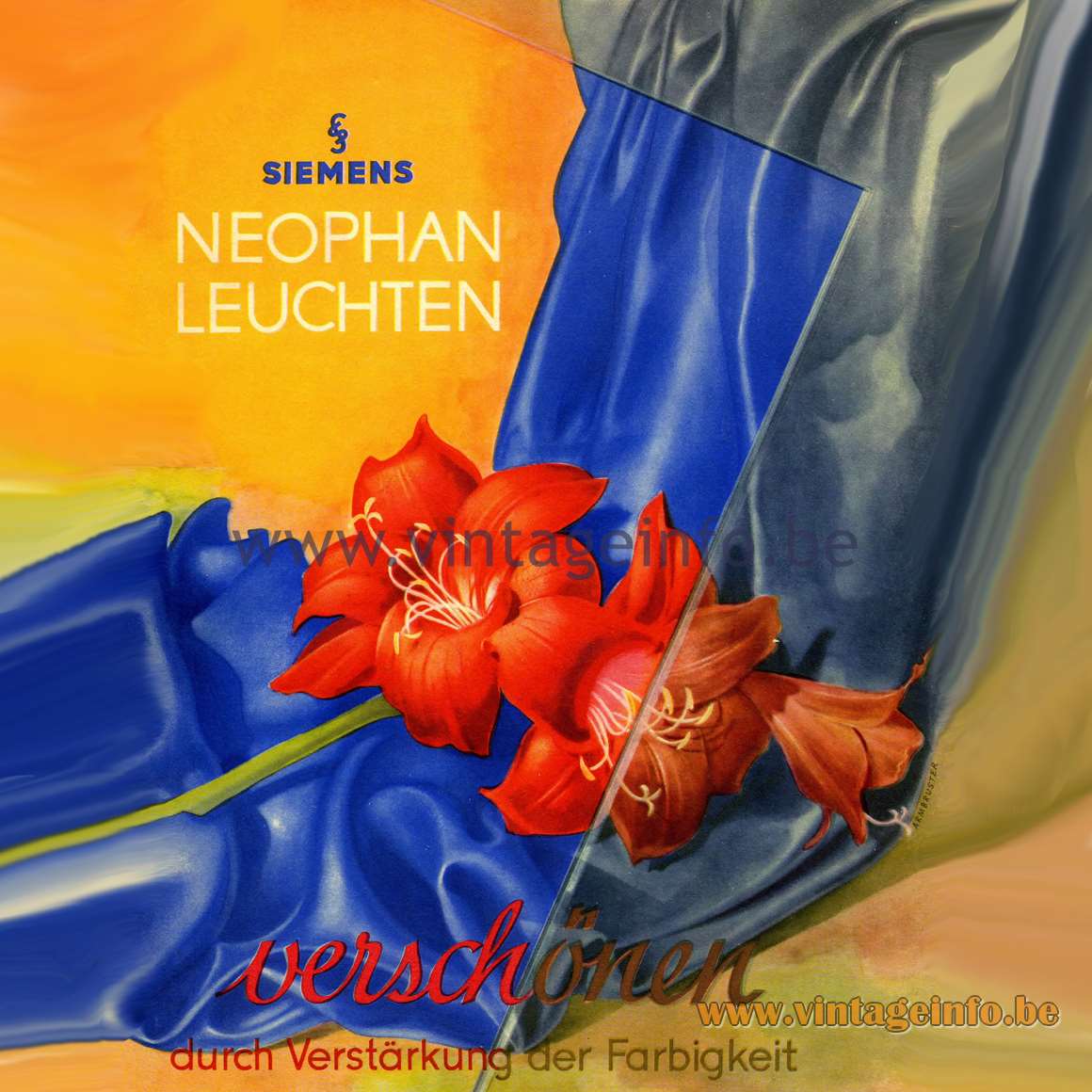Links (external links open in a new window)
Company history of AEG – 1882-2006
Trade-marks and symbols of Siemens
History of Siemens on the Siemens website
100th anniversary of the Schaltwerk factory in Berlin
Vintageinfo
Siemens Neophan Pendant Lamp
Materials: Two big white opal glass parts for the round lampshade. Nickel-plated metal (iron) rod and canopy. Some brass and metal parts. Brass E27 socket.
Rod length: 39 cm / 15.35”
Height: 40 cm / 15.74”
Width: ∅ 40 cm / 15.74”
Electricity: 1 bulb E27, 1 x 200 watt maximum, 110/220 volt.
Any type of light bulb can be used, not a specific one preferred.
Period: 1920s, 1930s – Bauhaus – Art Deco.
Designer: To be appraised.
Manufacturer: Siemens Schuckertwerke, Berlin, Germany
Other versions: This Siemens Neophan pendant lamp is model nr. JL13r5NI. The version of ∅ 50 cm / 19.68” is model nr. JL14gr5NI. Also the glass parts have numbers for easy replacement. They were made in the interwar period.
Neophan
The Siemens Neophan pendant lamp was a whole range of lamps in several different models. Wall lamps, ceiling lamps and pendant lamps.
Neophan was also the name of a German brand that produced glasses for the Luftwaffe, the German air force. It was the equivalent of Rayban in Germany during the Third Reich. They made all kinds of optical lenses, sunglasses, goggles and eye protective devices.
Always said that Peter Behrens designed this lamp and several others, but he never designed lamps for Siemens.
Peter Behrens
Peter Behrens was a German architect and designer born on 14 April 1868. He studied painting in Hamburg, Düsseldorf and Karlsruhe. At first, he worked as an illustrator, painter and bookbinder. He was one of the leaders of architectural reform and was a major designer of factories and office buildings.
In 1907, AEG retained Behrens as artistic consultant. He designed the entire corporate identity such as the logo, product design, publicity, lighting, etc. He is considered the first industrial designer in history. Behrens was never an employee for the company, only artistic consultant.
From 1907 to 1912, he had students and assistants, and among them were Le Corbusier, Walter Gropius, Jean Kramer, Adolf Meyer and Ludwig Mies van der Rohe.
Peter Behrens passed away in Berlin, 27 February 1940.
Publicity Text from the 1930s – translated from German
Properties and effect of the Siemens Neophan lights
Many hours of the day must see our eyes in artificial light. The most common and perfect artificial light source is the electric light bulb. Their spectrum contains essentially all the colours of daylight, but quantitatively in a different composition.
In particular, the proportion of yellow and red light rays is greater than in daylight. Since the human eye is most sensitive to the yellow rays of light, all colours in the incandescent light appear to be at a disadvantage in favour of the yellow colour component.
This impairment of the colour effect can be avoided if we let incandescent lamps out of the novel, because the special glass of these lights contains, among other things, an addition of neodymium oxide, which partially absorbs the excess of yellow incandescent light.
All other colour components of the light bulb spectrum, on the other hand, are not influenced. In the light of the Siemens Neophan lights, the eye sees again the colours in their naturally bright freshness. The light is therefore not coloured by filters, but its beautifying effect is based on an increase in colour saturation by absorbing the disturbing yellow content.
Externally, the Siemens Neophan interior lights differ from the normal opal glass luminaires only in their architecturally beautiful form, which, however, has nothing to do with the colour effect itself.
Coloured objects, foods, fruits, goods of all kinds, and even the colour tones of human skin, are enhanced by the colour contrasts in the light of the Siemens Neophan lights. Neophan lights are used as wall and interior lights as well as showcase mirror lights.
Siemens
Siemens-Schuckertwerke or Siemens-Schuckert was a German electrical engineering company headquartered in Berlin. Siemens Schuckert was founded in 1903 when Siemens & Halske bought Schuckertwerke. Siemens-Schuckert was specialised in power engineering and pneumatic instrumentation. All the lamps of Siemens were also produced at the Siemens-Schuckert plant. It also had factories in Erlangen and Nuremberg.
Siemens-Schuckert build a number of heavy bombers early in World War I. In 1936 the airplane part of company reorganised and became Bramo, the Brandenburgische Motorenwerke and were purchased in 1939 by BMW (Bayerische Motoren Werke) to become BMW Flugmotorenbau.
The Siemens-Schuckertwerke company was incorporated into the Siemens AG in 1966. The Siemens company still exists but it does not produce lighting anymore.
Many thanks to Wojtek of Modernretro2012 for the beautiful pictures. You can find his shop online on Ebay over here.
